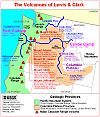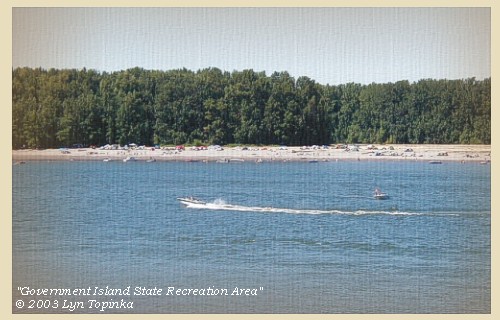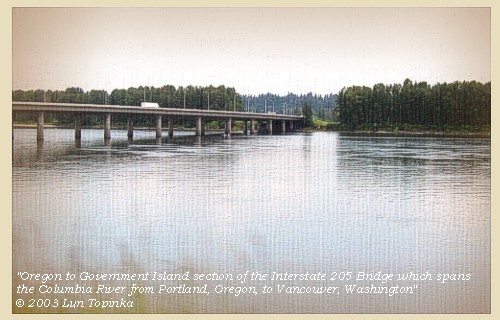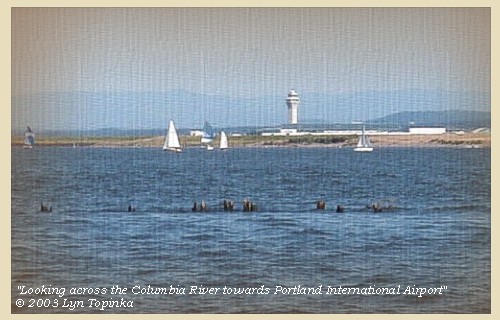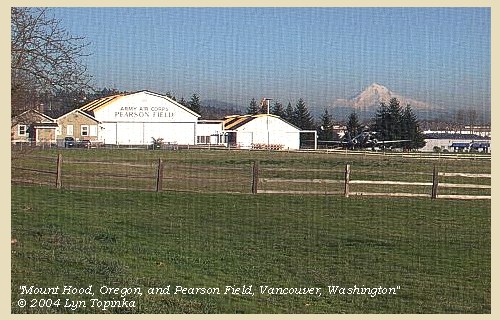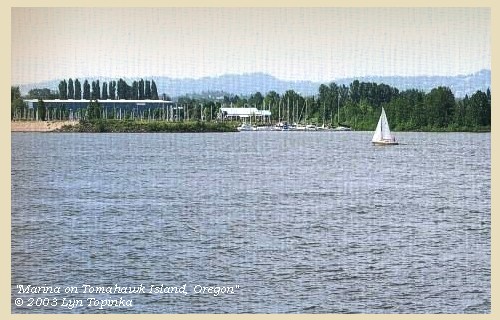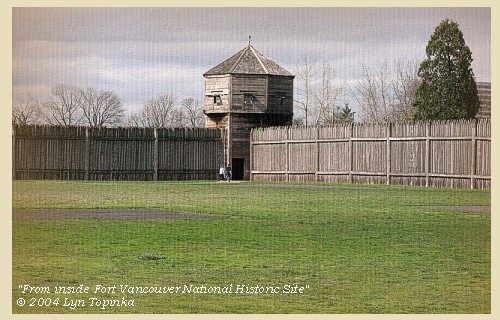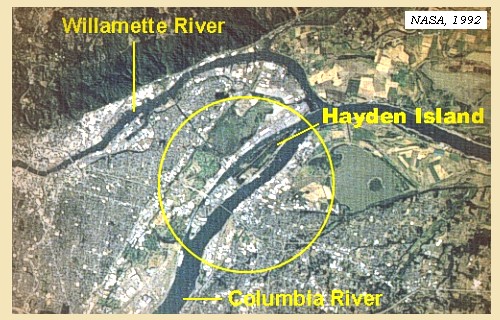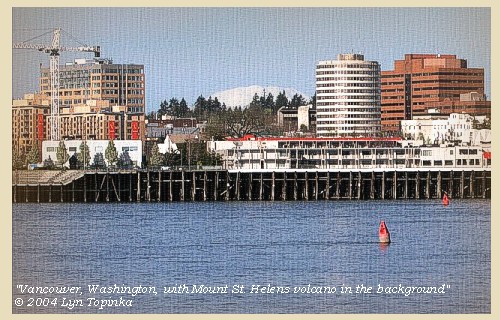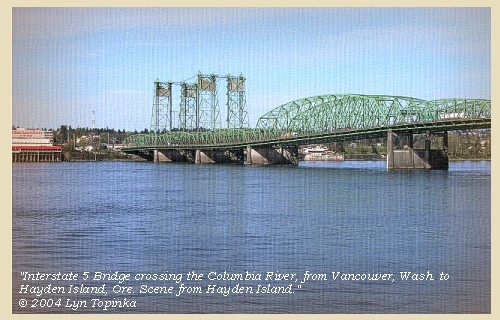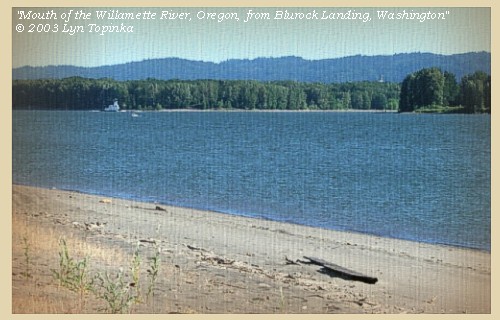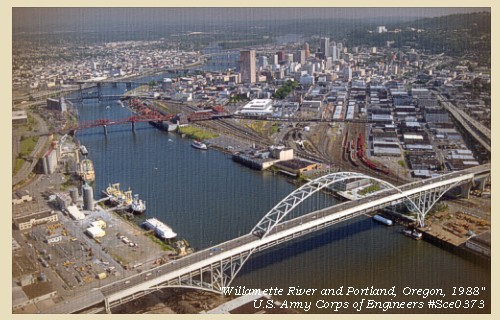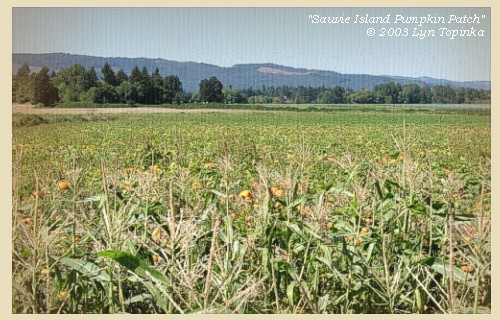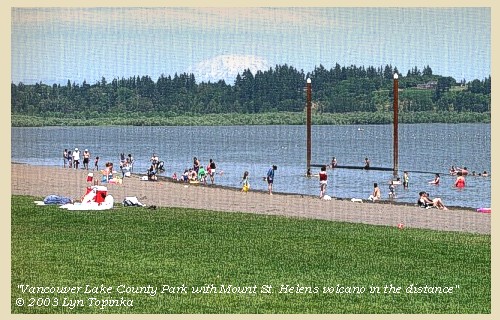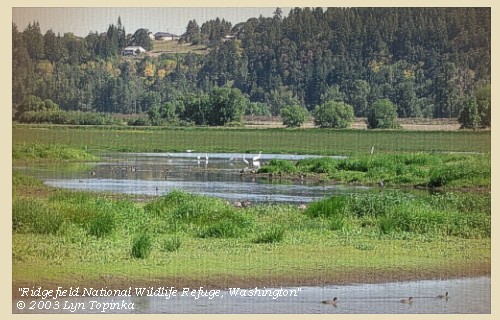The Volcanoes of
Lewis and Clark
Lewis and Clark
|
November 4, 1805 Vancouver, Washington - Columbia River Slough to Ridgefield |
|
Home
The Volcanoes of Lewis and Clark Map of the Journey Volcanoes, Basalt Plateaus, Major Rivers, etc. The Volcanoes Mount Adams, Mount Hood, Mount Jefferson, Mount Rainier, and Mount St. Helens CALENDAR of the Journey October 1805 to June 1806 Along the Journey Pacific Northwest Maps - Columbia River, Volcanoes, Flood Basalts, Missoula Floods, Geology, etc. The Corps of Discovery The Journey of Lewis and Clark About the Reference Materials The Journals, Biddle/Allen, DeVoto, Gass, Moulton, Topo Maps, and others USGS Lewis and Clark Links Links to USGS Websites highlighting the Lewis and Clark Journey Resources Publications Referenced and Websites Visited |
PREVIOUS
November 3 Columbia River Heading West, Rooster Rock to Columbia River Slough |
November 4
Vancouver, Washington, Columbia River Slough to Ridgefield NWR Government Island and Government Island State Rec Area, Interstate 205 Bridge, Portland International Airport, Fort Plain, Tomahawk Island, Fort Vancouver, Fort Vancouver National Historic Site, Pearson Field, Hayden Island, Vancouver (Washington), Interstate 5 Bridge, Willamette River, Portland, Oregon, Sauvie Island, FIVE VOLCANOES, Vancouver Lake and Vancouver Lake Park, and Ridgefield NWR |
CONTINUE
November 5 Heading to the Pacific, Ridgefield NWR to Prescott Beach, Oregon |
|
To the Pacific - November 1805
Vancouver, Washington - Columbia River Slough to Ridgefield |
| Lewis and Clark's camp of November 3, 1805, was located on the north shore of "Diamond Island", today the island complex known as Government Island. |
| Monday, November 4, 1805 |
| The weather was cloudy and cool, and the wind from the west. During the night, the tide rose eighteen inches near our camp. We set out about eight o'clock, and at the distance of three miles came to the lower end of Diamond island [Government Island]. It is six miles long, nearly three in width, and like the other islands, thinly covered with timber, and has a number of ponds or small lakes scattered over its surface. Besides the animals already mentioned we shot a deer on it this morning. Near the end of Diamond island [Government Island] are two others, separated by a narrow channel filled at high tides only, which continue on the right for the distance of three miles, and like the adjacent low grounds, are thickly covered with pine. |
| Since 1982 th Interstate 205 Bridge has crossed Government Island linking Portland, Oregon, with Vancouver, Washington. |
| Just below the last, we landed on the left bank of the river, at a village of twenty-five houses [today's Portland International Airport]. ...... |
| We resumed our journey, and at seven miles distance came to the head of a large island near the left [Hayden Island, see information below]. On the right shore is a fine open prairie [Fort Plain, today's Vancouver, Washington, area between Ryan Point and Fort Vancouver/Pearson Airpark] for about a mile, back of which the country rises, and is supplied with timber, such as white oak, pine of different kinds, wild crab, and several species of undergrowth, while along the borders of the river, there are only a few cottonwood and ash trees. In this prairie were also signs of deer and elk. |
| "... I walked out on the Stard. Side found the country fine, an open Prarie for 1 mile back of which the wood land comence riseing back ... a Pond on the Stard Side, off from the river. ..." [Clark, November 4, 1805, first draft] |
| "... at 7 miles below this village passed the upper point of a large Island nearest the Lard. Side, a Small Prarie in which there is a pond opposit on the Stard. Here I landed and walked on Shore, about 3 miles a fine open Prarie for about 1 mile, back of which the countrey rises gradually and wood land comencies ..." [Clark, November 4, 1805] |
| Many ponds - now filled in - were in this area around Ryan Point, Fort Vancouver, and Pearson Airpark. Mount Hood, Oregon, is visible throughout this entire section of the Columbia River. Today this section is heavily built-up with industry and condominiums. |
| When we landed for dinner, a number of Indians from the last village, came down for the purpose, as we supposed, of paying us a friendly visit, as they had put on their favourite dresses. ...... We smoked with them and endeavoured to show them every attention, but we soon found them very assuming and disagreeable companions. ...... |
| "... dureing the time we were at dinner those fellows Stold my pipe Tomahawk which they were Smoking with, I imediately Serched every man and the canoes, but Could find nothing of my Tomahawk ..." [Clark, November 4, 1805] |
| Lewis and Clark referred to this island as "Tomahawk Island", a name which in 1927 was re-assigned to a new island on the upstream tip of Hayden Island. |
| We then proceeded [Fort Vancouver and Pearson Field area] |
| and soon met two canoes with twelve men of the same Skilloot nation, who were on their way from below. The larger of the canoes was ornamented with the figure of a bear in the bow, and a man in the stern, both nearly as large as life, both made of painted wood, and very neatly fixed to the boat. In the same canoe were two Indians finely dressed and with round hats. This circumstance induced us to give the name of Image canoe to the large island [Hayden Island], the lower end of which we now passed at the distance of nine miles from its head. |
| The City of Vancouver, Washington, was incorporated in this area in 1857. Between 1915 and 1917, the Interstate-5 bridge was constructed, connecting Hayden Island, Oregon, with Vancouver, Washington. Mount St. Helens can be seen from Hayden Island. |
| We had seen two smaller islands to the right, and three more near its lower extremity. The Indians in the canoe here made signs that there was a village behind those islands, and indeed we presumed there was a channel on that side of the river, for one of the canoes passed in that direction between the small islands, but we were anxious to press forward, and therefore did not stop to examine more minutely. |
| On their return trip in 1806, Lewis and Clark discovered and explored the Willamette River. Today, the city of Portland, Oregon, is built up along the banks of the Lower Willamette. |
| The river [Columbia River] was now about a mile and a half in width, with a gentle current, the bottoms extensive and low, but not subject to be overflowed. Three miles below the Image canoe island [Hayden Island] we came to four large houses on the left side [located on Sauvie Island], |
| at which place we had a full view of the mountain which we first saw on the 19th of October, from the Muscleshell rapid [Umatilla Rapids], and which we now find to be the mount St. Helen of Vancouver. It bears north 25o east, about ninety miles distant; it rises in the form of a sugar loaf to a very great height, and is covered with snow. |
| "... (Encamped on the Lard. Side. Mt. Ranier) Mount Hellen bears N. 25o E about 80 miles, this is the mountain we Saw near the forks of this river. it is emensely high and covered with Snow, riseing in a kind of Cone perhaps the highest pinecal from the common leavel in america ..." [Clark, November 4, 1805, first draft] |
| "... at 3 miles lower, and 12 Leagues below quick Sand river passed a village of four large houses on The Lard. Side, near which we had a full view of 'Mt. Helien' which is perhaps the highest pinical in America from their base it bears N. 25o. E. about 90 miles -- This is the mountain I Saw from the Muscle Shell rapid on the 19th of October last Covered with Snow, it rises Something in the form of a Sugar lofe -- ..." [Clark, November 4, 1805] |
| Initially in this passage William Clark refers to this mountain as Mount Rainier, and then corrects himself when both became visible further downstream. His correction however was still in error, as he refers to Mount St. Helens being the mountain they viewed on October 19, 1805, near the junction of the Snake River with the Columbia, when in reality that mountain was Mount Adams. The Gass, Ordway, and Whitehouse Journals make no correction and all refer to Mount St. Helens as Mount Rainier. |
| "... We went 28 miles and encamped on the north side. In the evening we saw Mount Rainy on the same side. It is a handsome point of a mountain, with little or no timber on it, very high, and a considerable distance off this place. ..." [Gass, November 4, 1805] |
| "... we discovred a high round mountain Some distance back from the River on the Stard Side which is called mount rainy ..." [Ordway, November 4, 1805] |
| "... we discovered a high round mountain some dis back from the River on Stard. Side which is called mount Rainy. we are not yet out of Site of Mount Hood which is covd. with Snow ..." [Whitehouse, November 4, 1805] |
| "... We discovered a mountain, which lay on the North side of the River, some distance back from it. It appeared to be round, and is called Mount Rainey . We are not yet out of sight of Mount Hood, which from this place appears to be covered with Snow. ..." [Whitehouse, November 4, 1805] |
| On a clear day FIVE VOLCANOES can be seen along this stretch of the river. |
|
|
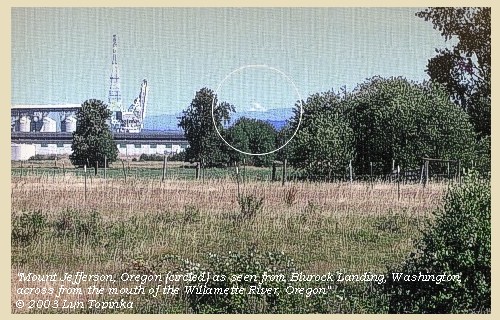
Mount Jefferson, Oregon, (circled): as seen from Blurock Landing, Washington. Blurock Landing is across the Columbia River from the mouth of the Willamette River, Oregon. Copyright © 2003 Lyn Topinka, private archives, used with permission. 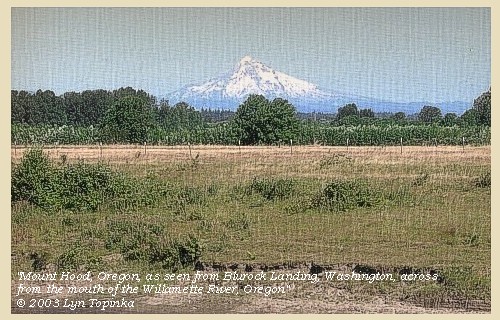
Mount Hood, Oregon: as seen from Blurock Landing, Washington. Blurock Landing is across the Columbia River from the mouth of the Willamette River, Oregon. Copyright © 2003 Lyn Topinka, private archives, used with permission. 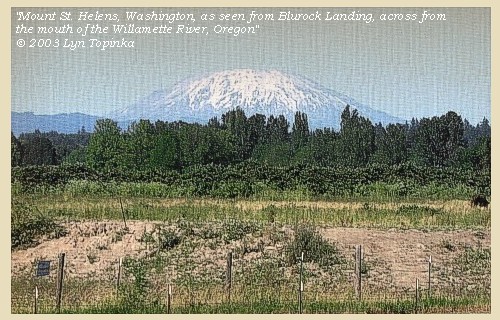
Mount St. Helens, Washington: as seen from Blurock Landing, Washington. Blurock Landing is across the Columbia River from the mouth of the Willamette River, Oregon. Copyright © 2003 Lyn Topinka, private archives, used with permission. 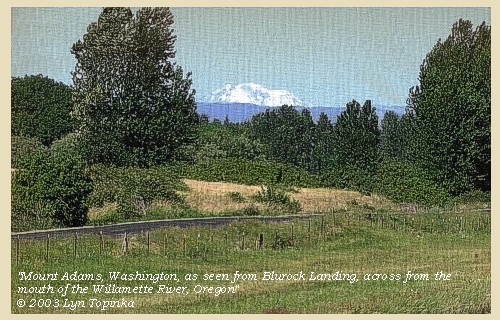
Mount Adams, Washington: as seen from Blurock Landing, Washington. Blurock Landing is across the Columbia River from the mouth of the Willamette River, Oregon. Copyright © 2003 Lyn Topinka, private archives, used with permission. 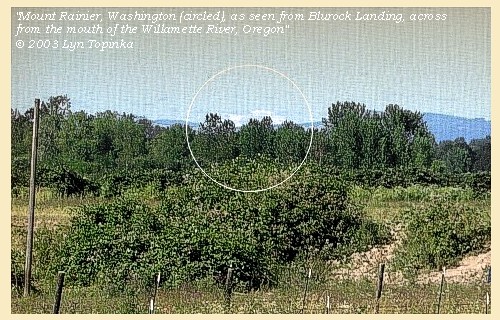
Mount Rainier, Washington: as seen from Blurock Landing, Washington. Blurock Landing is across the Columbia River from the mouth of the Willamette River, Oregon. Copyright © 2003 Lyn Topinka, private archives, used with permission. |
| A mile lower we passed a single house on the left, and another on the right. [Vancouver Lake vicinity] |
| The Indians had now learnt so much of us, that their curiosity was without any mixture of fear, and their visits became very frequent and troublesome. We therefore continued on till after night, in hopes of getting rid of them; but after passing a village on each side, which on account of the lateness of the hour we saw indistinctly, we found there was no escaping from their importunities. We therefore landed at the distance of seven miles below Image canoe island [Hayden Island], and encamped [in Ridgefield National Wildlife Refuge] near a single house on the right, having made during the day twenty-nine miles. ...... |
|
|
|
The Camp - November 4, 1805:
In today's Ridgefield National Wildlife Refuge. |
| Home | Previous | Continue |
If you have questions or comments please contact: GS-CVO-WEB@usgs.gov
June/July 2004, Lyn Topinka
The Volcanoes of Lewis and Clark Home Page | CVO Home Page

